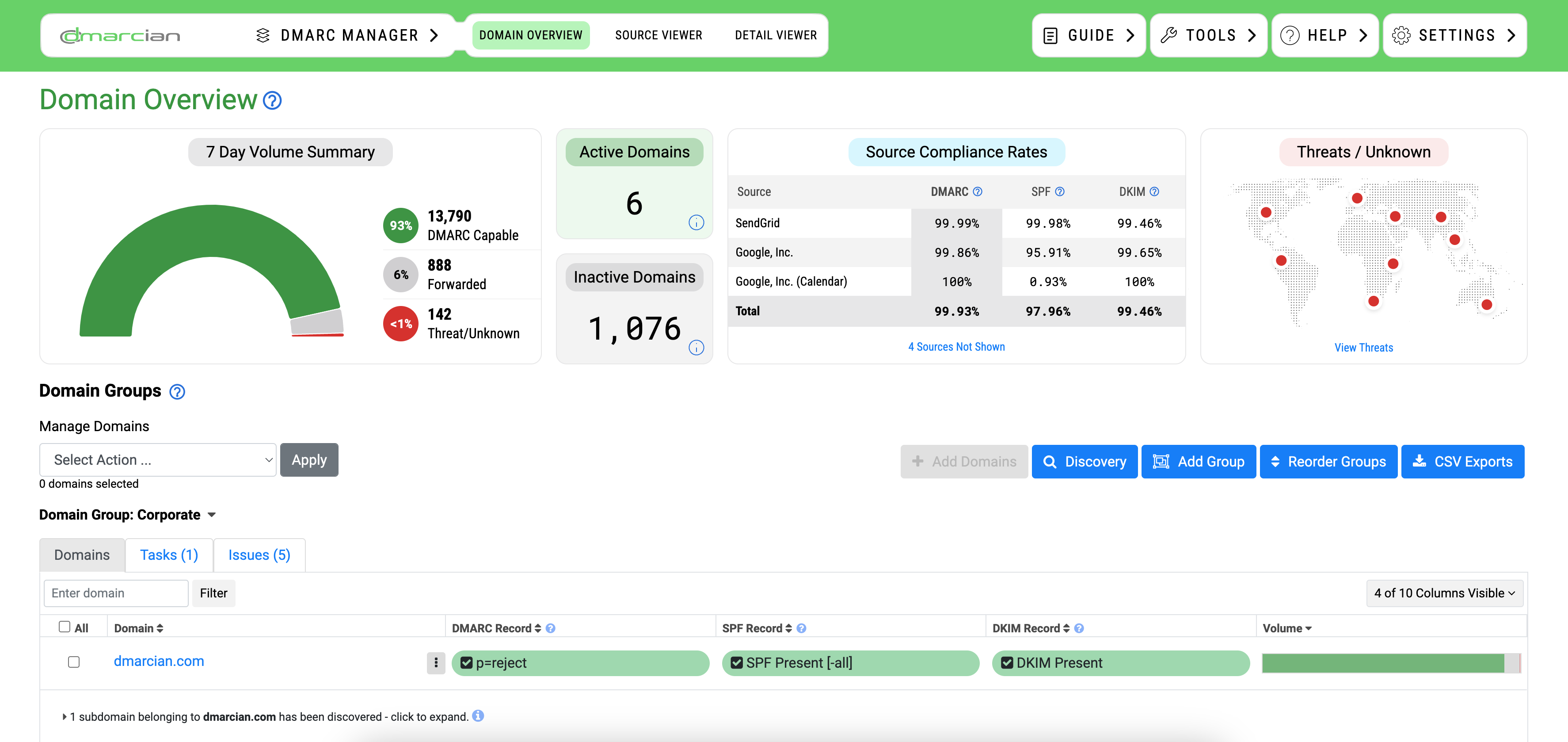User experience
Our experience with Dmarcian's user interface has generally been positive. The dashboard is well-organized, making it straightforward to navigate through various reports and settings. We appreciate the clear visualisations, such as the DMARC aggregate report overviews, which quickly highlight areas of concern or progress towards enforcement. Setting up new domains and configuring DMARC records is guided, which simplifies the initial onboarding.
While powerful, there can be a slight learning curve to fully utilise all of Dmarcian's advanced features. Some users might find specific integrations or API usage less intuitive initially, as one G2 review points out. However, for core DMARC monitoring and policy management, it's quite accessible, offering a polished experience that caters to varying levels of technical proficiency.
The user experience for Docker DMARC Reports is entirely different, largely because it's a self-hosted, open-source project. Setup involves manual configuration of Docker containers, databases, and DMARC DNS records. This requires a solid understanding of Linux, Docker, MySQL, and email protocols. For those without this expertise, the initial setup can be quite challenging, even daunting.
Once running, the web interface for viewing reports is functional but minimalist. It provides a straightforward display of parsed DMARC data, but it lacks the rich, interactive dashboards and deep analytical tools of managed services. Its 'user experience' really begins with the deployment process, which is a significant barrier to entry for many. Think of it as a DIY project, where the joy is in the building, not just the using.











































 3.5 / 5(5)
3.5 / 5(5)
 0 / 5(0)
0 / 5(0)



